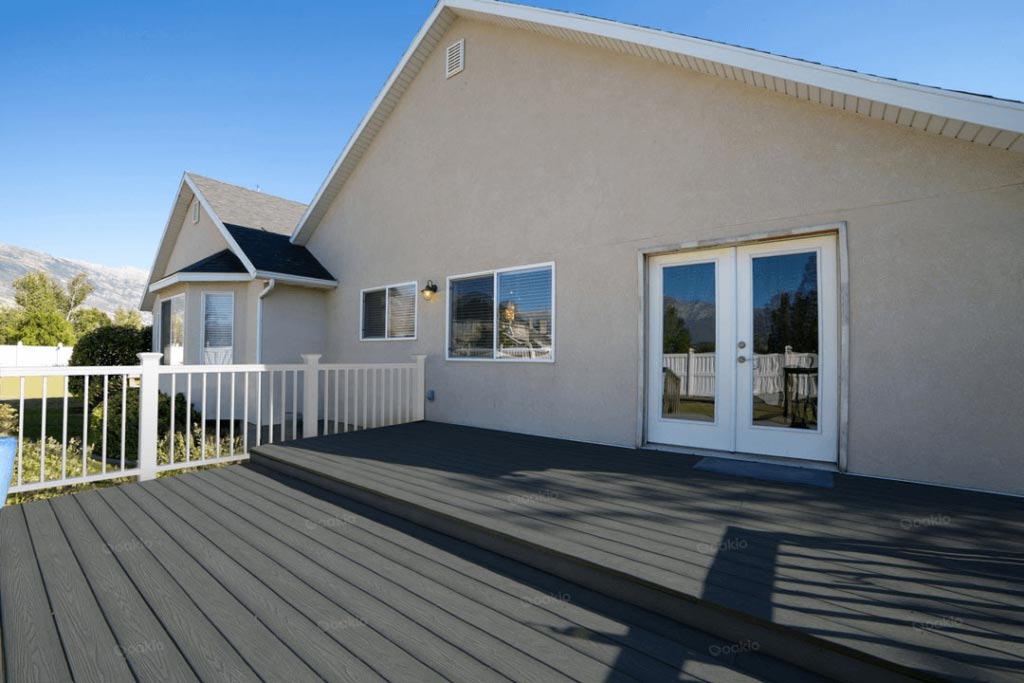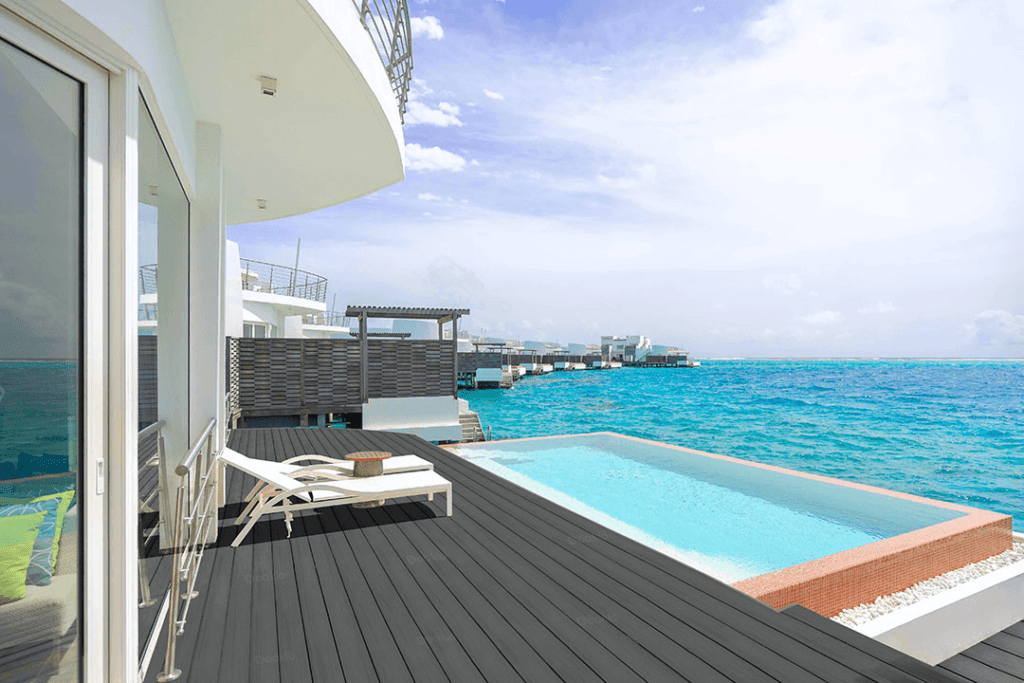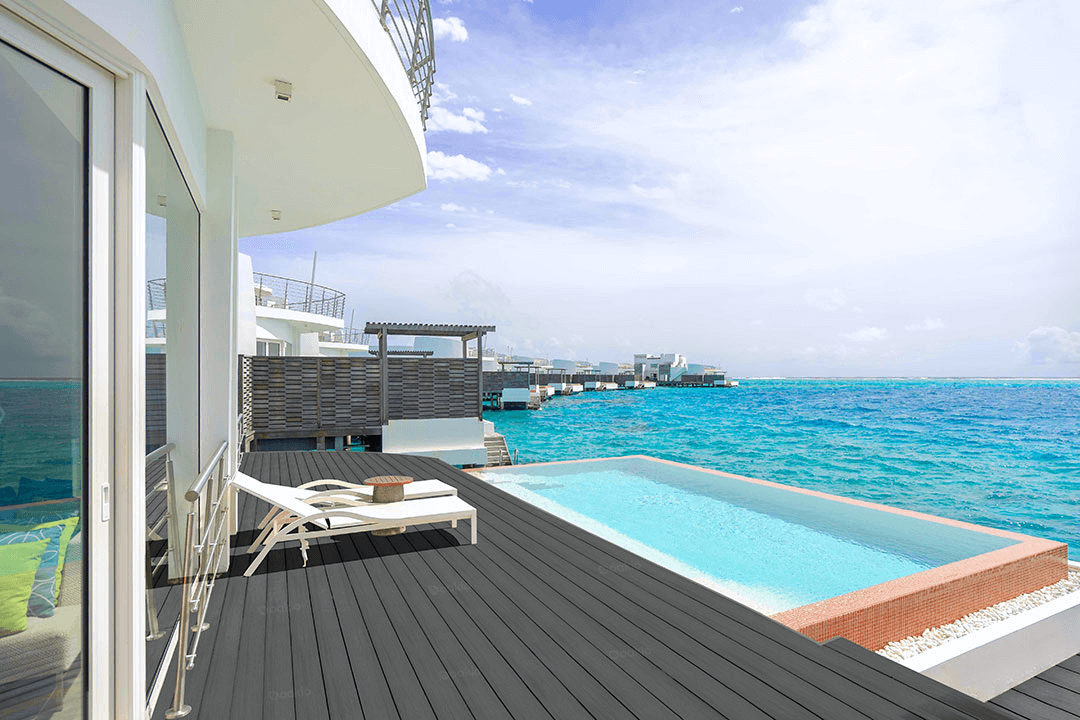Hollow VS Solid Composite Decking: Which One to Choose
In the world of composite decking, making the right choice can significantly impact the aesthetics, durability, and maintenance of your space. Today, we’re diving deep into the comparison between two popular options: solid composite decking and hollow composite decking.
Hollow and solid composite decking are two popular choices for indoor and outdoor composite decks, offering different benefits and drawbacks depending on the needs of the homeowner.
These two contenders have their unique features, benefits, and considerations. Whether you’re a homeowner looking to revamp your backyard or a construction professional advising clients, understanding these differences is key to making an informed decision.
Why Choose Solid Composite Decking?
Solid composite decking has long been celebrated as the pinnacle of decking materials within the composite decking community. Esteemed for its remarkable durability, robust strength, and exceptional quality, it stands as the premier selection for homeowners who value the longevity and stability of their decking projects above all else. This high regard is not without reason; solid composite decking delivers on its promises, offering a wealth of benefits that cater to the needs of even the most discerning homeowner. There are many advantages of solid composite decking:

Exceptional Strength and Durability: The dense and robust nature of solid composite decking endows it with superior hardness and a remarkable capacity for load-bearing. This characteristic is particularly beneficial for high-traffic areas or spaces designed to support heavy furniture, ensuring that the deck remains a lasting fixture of your outdoor living area.
Moisture Resistance Superhero: Moisture poses a significant threat to the integrity of outdoor decking, but solid composite decking acts as a formidable barrier against water absorption. This critical feature prevents the onset of dampness and rot, safeguarding the beauty and structure of your deck from the challenges posed by moisture.
Impervious to High Temperatures: Traditional wood decking often falls prey to the colonization of insect eggs under high temperatures. Solid composite decking, however, stands as a bulwark against such vulnerabilities, effectively resisting the incursion of high temperatures and ensuring that your deck remains free from unwanted pests.
A Synthesis of Safety and Comfort: Beyond its aesthetic appeal, solid composite decking brings an array of functional benefits, including anti-corrosion, anti-static properties, insulation, heat insulation, and flame retardance. These features collectively ensure that your outdoor space is not only visually appealing but also a safe and comfortable environment for family and friends to gather.
Why Opting For Hollow Composite Decking?
Hollow composite decking emerges as a compelling choice for those seeking an innovative and functional decking solution. Hollow decking is a plastic wood decking with holes inside it. The surface effect is no different from other plastic wood floors, but the bearing capacity and hardness of the deck itself are greatly weakened. With its distinctive construction, this decking type is characterized by its internal hollow sections, which significantly reduce the material’s weight without sacrificing its structural integrity.

Economical and Efficient: For budget-conscious homeowners or project managers, hollow composite decking presents a cost-effective alternative. The reduction in material usage not only lowers the cost of production but also translates into savings for the end consumer. Additionally, its lightweight nature facilitates easier and quicker handling and installation, reducing labor time and costs. This efficiency is particularly valued by construction teams, who can expedite project timelines without compromising on quality.
Aesthetically Pleasing Options: Despite its lightweight construction, hollow composite decking does not fall short in delivering aesthetic appeal. It is engineered to mimic the look and feel of its solid composite counterpart, offering a range of colors and finishes to complement any outdoor design scheme. This ensures that opting for an economical solution does not mean having to compromise on the visual attractiveness of your outdoor living space.
Balanced Performance for Varied Uses: While hollow composite decking may not boast the same level of brute strength as solid decking, it nevertheless offers sufficient hardness and load-bearing capacity for a wide range of applications. From residential decks to less demanding commercial spaces, hollow composite decking can withstand regular use. However, it’s important to consider potential vulnerabilities, such as susceptibility to insect infestation. Recognizing this, manufacturers have focused on enhancing the material’s resistance to such issues, improving its durability and suitability for various settings.
Weigh Pros And Cons of Hollow VS Solid Decking
When it comes down to selecting between solid and hollow composite decking, the decision requires a thoughtful consideration of several key factors. Each option serves different needs and environments, making it essential to assess your specific project requirements.
Assess the Intended Use: Areas subject to heavy foot traffic or the weight of outdoor furniture necessitate the robustness and enhanced load-bearing capacity of solid composite decking. Its solid construction ensures a durable surface that can withstand the rigors of daily use. Conversely, for applications where light use is anticipated or where ease of installation is a priority, hollow composite decking offers an effective solution with its lighter weight and easier handling.

Evaluate Long-Term Value: While solid composite decking may present a higher initial investment, its longevity, and minimal maintenance needs often translate to greater cost-effectiveness over time. Hollow composite decking, with its more attractive initial price point, can still be a viable option, particularly for projects with tighter budget constraints or where long-term durability is less of a concern.
Consider Aesthetic and Design Goals: Both solid and hollow composite decking come in a variety of colors and textures, allowing for flexibility in design and aesthetic appeal. However, your specific design vision and aesthetic preferences might influence your choice. Solid decking’s dense and uniform appearance can offer a more traditional wood-look finish, while hollow decking’s design might be preferable for certain architectural styles or lighter construction requirements.
Conclusion
In wrapping up our guide on choosing between hollow and solid composite decking, it’s evident that both options offer distinct advantages tailored to different priorities and project requirements. Shining for its durability and aesthetic richness, solid composite decking is ideal for those who seek a long-lasting and visually appealing outdoor space. Moreover, solid composite decking, including Oakio solid composite decking, is particularly suited for high-traffic areas or environments where durability is paramount. On the flip side, hollow composite decking offers an innovative and cost-effective solution that doesn’t skimp on style. For example, Oakio hollow composite decking is lighter, making installation simpler and more budget-friendly, which can be a decisive factor for many homeowners and builders alike.
Deciding between the two boils down to assessing your specific needs: the importance of longevity and maintenance, aesthetic preferences, budget constraints, and the expected usage of the deck area. While solid decking might come with a higher upfront cost, its durability could offer savings in the long run. Conversely, hollow decking’s initial cost-effectiveness and ease of installation might be more appealing for certain projects.
Ultimately, whether you choose Oakio’s solid or hollow composite decking or another brand’s decking, the key is to ensure that your decision aligns with your project’s goals, ensuring a beautiful, functional, and satisfying outcome for your outdoor living space.
Trending Reading
What Are the Differences Between the WPC Board and PVC Board?
[2024 Update] How Long Does WPC Decking Last?











